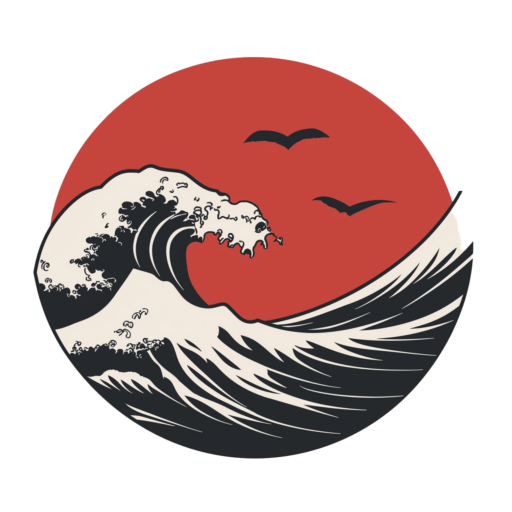In the vibrant region of Cascais, Portugal, Praia Grande offers a spectacular surf spot that has been a favorite among local and visiting surfers alike. Known for its stunning coastal views and consistent waves, this beach provides an ideal setting for surfers of all levels. In this article, we’ll dive into the essentials of surfing at Praia Grande, covering everything from the region’s unique traits to practical advice for making the most out of your surf experience there.
Discovering Praia Grande
Praia Grande is located in the Sintra-Cascais Natural Park, a protected area known for its natural beauty and rugged coastline. Situated approximately 40 kilometers west of Lisbon, it’s a relatively short drive from Portugal’s bustling capital city. The beach stretches over a kilometer long, providing ample space for both surfing and relaxation. Flanked by dramatic cliffs and vast dunes, Praia Grande is a quintessential example of Portugal’s coastal charm.
Getting There
From Lisbon: To reach Praia Grande from Lisbon, you can take the A37 road or the A16 highway, depending on your starting point in the city. The journey by car typically takes about 40-50 minutes. Alternatively, you can take a train from Lisbon’s Rossio Station to Sintra and then hire a taxi or take a local bus to the beach. Public transportation might take a bit longer but offers a scenic route through the Sintra hills.
From Cascais: If you’re staying in Cascais, Praia Grande is even more accessible. A direct drive via the N375 will get you there in about 25 minutes. For those relying on public transport, a combination of a train ride to Sintra followed by a local bus is your best bet.
The Waves at Praia Grande
Wave Characteristics
Praia Grande is renowned for its powerful beach breaks, making it a fantastic spot for surfers seeking to challenge themselves on dynamic waves. The beach’s exposure to the Atlantic Ocean means it picks up plenty of swell, with wave heights often ranging between two to four meters. Praia Grande works best on a north to north-west swell, with an offshore wind from the southeast.
Tides and Conditions
The surf at Praia Grande is highly influenced by the tides. Mid to high tide is usually optimal for surfing, as low tide tends to expose the rocky seabed, which can be hazardous. The best conditions are often found in the autumn and winter months when the swells are more consistent and the crowds thinner. However, spring and early summer also provide good waves, albeit with slightly busier lineups.
Crowds
Praia Grande is a popular spot, attracting both locals and tourists. On weekends and during peak summer months, expect a higher concentration of surfers, including surf schools and tourists. To experience a more relaxed session, try hitting the waves early in the morning or later in the afternoon during weekdays.
<div
data-windywidget="forecast"
data-thememode="white"
data-spotid="378293"
data-appid="b280fcb691b8eaf557fe22be2864af54">
</div>
<script async="true" data-cfasync="false" type="text/javascript" src="https://windy.app/widgets-code/forecast/windy_forecast_async.js?v1.4.6"></script>Tips for Surfers
For Beginners
Praia Grande’s size and the power of its waves can be intimidating for beginners, but don’t let that deter you. Local surf schools offer lessons and rentals, ensuring that novices can learn safely under professional guidance. If you’re a beginner, focus on the smaller waves near the shoreline and respect the skills of more experienced surfers by staying clear of the more challenging sections.
Local Surf Schools: Consider booking a few lessons with certified instructors who can guide you through the basics of surfing and ocean safety. Schools such as Surf At Praia and Cascais Surf School provide excellent services for newbies.
For Intermediate and Advanced Surfers
Seasoned surfers will relish the opportunities presented at Praia Grande. The beach breaks here are fast and powerful, providing perfect conditions for honing your skills or catching some serious airtime. Advanced surfers should look for sections of the beach with fewer people, as these often yield better and less obstructed waves.
Equipment Advice: For Praia Grande’s conditions, a shortboard will often be preferable due to the nature of the surf. However, during bigger swells, a step-up board might be necessary to manage the larger waves.
Safety Considerations
While Praia Grande is generally safe, the sheer power of its waves, coupled with strong currents, warrants caution. Always check local surf forecasts before heading out, and never surf alone if you’re unfamiliar with the conditions. Lifeguards are usually on duty during the summer, but their presence is limited in the off-season.
Beyond Surfing
What to Do When Not Surfing
While surfing is the main attraction, Praia Grande offers more than just ocean thrills. Take time to explore the nearby Sintra-Cascais Natural Park, where hiking trails and scenic viewpoints abound. History buffs will appreciate the proximity to cultural landmarks such as the Sintra National Palace and the Moorish Castle, both steeped in rich history and offering breathtaking views.
Dining and Accommodation: After a day spent on the waves, relax at one of the nearby restaurants offering fresh seafood and traditional Portuguese cuisine. If you wish to stay overnight, numerous lodging options range from budget-friendly hostels to luxurious hotels.
Conclusion
Praia Grande is more than just a surf spot; it’s an experience waiting to be discovered. Its combination of powerful waves, stunning scenery, and local hospitality makes it a must-visit for any surfer traveling through Portugal. Whether you’re catching your first wave or challenging yourself on the beach’s more formidable breaks, Praia Grande promises an unforgettable adventure. So pack your board, check the tide, and ride the waves at one of Portugal’s premier surfing destinations. Enjoy the surf, respect the ocean, and make lasting memories at Praia Grande.
[:]